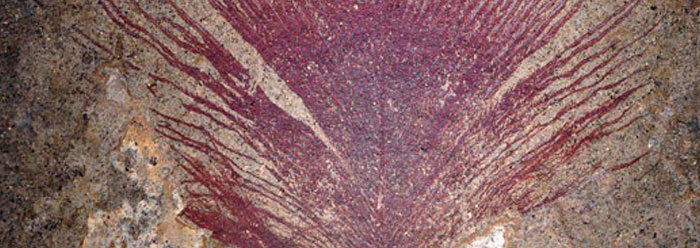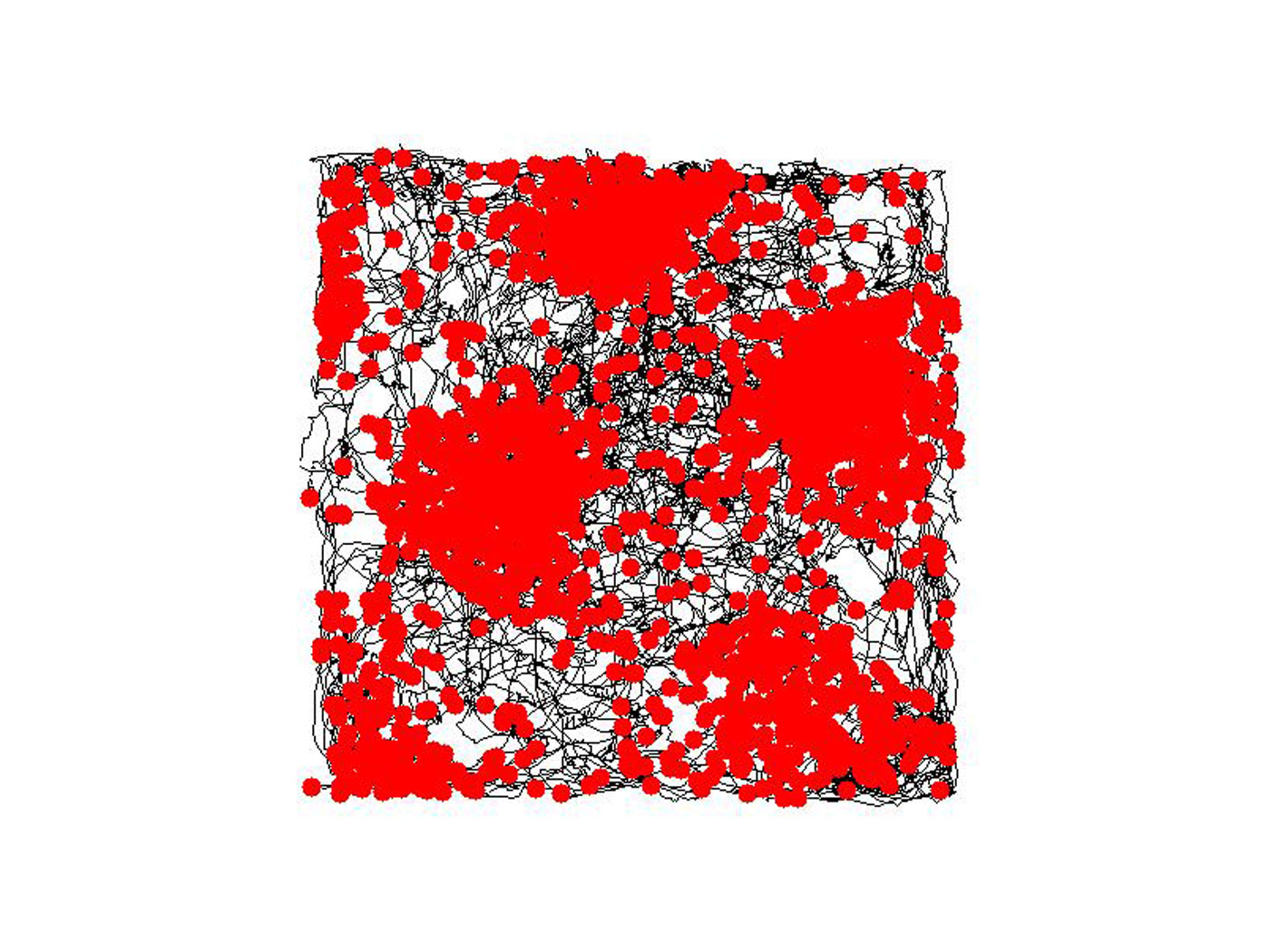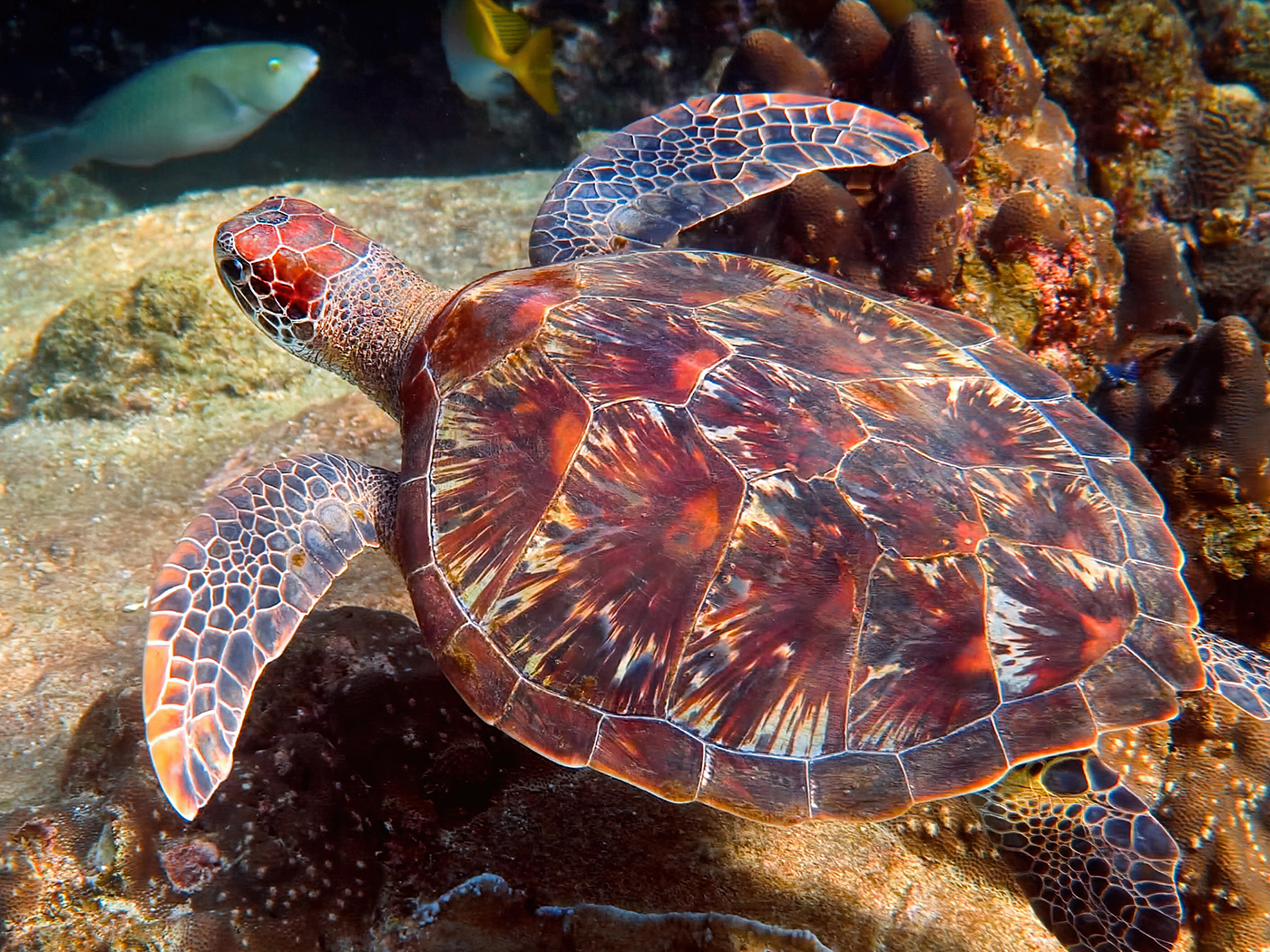Bird feathers can contain pigmentation for a wide range of colors, with specific molecules reflecting certain hues when light touches them. They also can display “structural” colors, where the thicknesses of layers of cells and connective tissues are fine-tuned to refract certain colors.
Scientists recently described structural coloration that is still clearly discernible in well-preserved fossil feathers. Why do these fossil feathers have their original cell structures laid out in the original patterns if they are millions of years old?
In 1995, paleontologists Derek Briggs and Paul Davis provided an overview of fossil feathers from the 40 or so places on the globe where they were known to exist.1 Among their findings was that 69 percent of feather fossils are preserved not as impressions, but as carbon traces. This was verified by comparing the proportions of carbon in both the surrounding carbonaceous rock and the fossil within it, to the proportions of organically-derived carbon from the same items. They found that there was more organic carbon in the fossil than in the stone.
At that time, the researchers thought the carbon came from bacteria that had degraded the feather material and then remained placed in the feather’s outline. But 13 years later, Briggs and other colleagues showed clear evidence that these “bacterial cells” were actually melanosomes―the same microscopic, sausage-shaped, dark pigment-containing structures in today’s bird feathers―from the original feather.2
This means that the organic carbon in the melanosomes somehow avoided decay for millions of years, which contradicts “the well-known fact that the majority of organic molecules decay in thousands of years.”3
Briggs and his colleagues recently described fossil feathers from the German Messel Oil Shale deposits, which are famous for their remarkably well-preserved fossils. These not only contained organic carbon from melanosomes (not bacteria), but the melanosomes were still organized in their original spacing and layering. Thus, the “metallic greenish, bluish or coppery” colors that can be seen from different viewing angles, producing an iridescent sheen, may very well be similar to that of the original bird’s plumage.4
Biologists already know that “in order to produce a particular [structural] colour, the keratin thickness must be accurate to within about 0.05 μm (one twenty thousandth of one millimetre!).”5 Although the keratin had decayed from these fossil feathers, its layers of melanosomes remained laid out in similarly precise thicknesses. Thus, not only was the color preserved, but the melanosomes were still organized to within micrometers of their original positions.
Evolutionary geologists maintain that the Messel Shale was formed 47 million years ago. But with these colorful feather fossils—which retain not only the original molecules inside their original melanosomes, but also the architectural layout of these structures—evolutionists must invent some kind of magical preservation process that simply isn’t observed in the laboratory or in nature.
Without the assumption of millions of years, however, the fossil data begin to make much more sense. Fresh-looking fossil features point to a young world.
References
- Davis, P.G. and D. E. G. Briggs. 1995. Fossilization of feathers. Geology. 23 (9): 783-786.
- Thomas, B. Fossil Feathers Convey Color. ICR News. Posted on icr.org July 21, 2008, accessed September 10, 2009.
- Fossil feathers reveal their hues. BBC News. Posted on news.bbc.co.uk July 8, 2008, reporting on research published in Vinther, J. et al. 2008. The colour of fossil feathers. Biology Letters. 4 (5): 522-525.
- Scientists Find Evidence of Iridescence in 40-Million-Year-Old Feather Fossil. Yale University press release, August 26, 2009, reporting on research published in Vinther, J. et al. Structural coloration in a fossil feather. Biology Letters. Published online before print August 26, 2009.
- Burgess, S. 2001. The beauty of the peacock tail and the problems with the theory of sexual selection. TJ. 15 (2): 96.
Image Credit: Jakob Vinther/Yale University
* Mr. Thomas is Science Writer at the Institute for Creation Research.
Article posted on September 16, 2009.

























